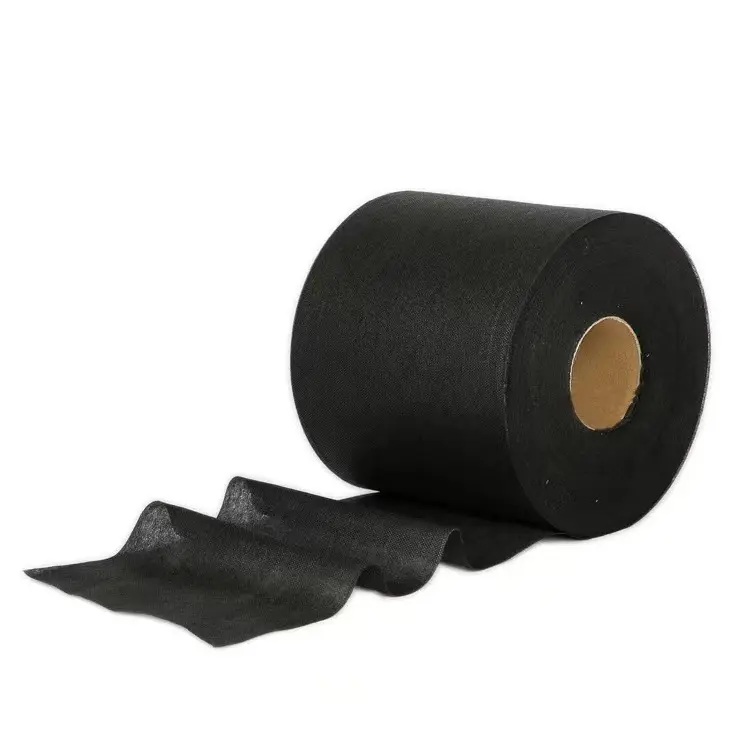A Deeper Dive Into the Material: Spunbond Non-Woven Fabric
As we discuss the future of spunbond non-woven fabric, specifically its recyclability and biodegradability, it’s important to first have a comprehensive understanding of the material itself. Spunbond non-woven fabric is an intricate web of fibers that are bonded together using thermal, chemical, or mechanical means. Predominantly, the manufacturing process uses polypropylene (PP) or polyester (PET), which are thermoplastic polymers, to create this versatile fabric.
This versatile material finds applications in myriad industries. From the medical field where it is used to create protective garments, to agriculture where it serves as crop covers, to everyday items like shopping bags, the ubiquity of spunbond non-woven fabric is undeniable. This widespread use prompts a key question – what happens to these products at the end of their lifecycle? Can they be recycled or composted, or do they persist in the environment, contributing to the mounting global plastic waste crisis?
The Theory and Practice of Recycling Spunbond Non-Woven Fabric
Polypropylene, the primary material used in spunbond non-woven fabric, is theoretically recyclable. As a thermoplastic polymer, it can be melted and reshaped numerous times without a significant decrease in its quality. This is a valuable property that makes polypropylene a prime candidate for recycling and gives rise to the potential for a circular economy where materials are used, recycled, and reused, thus minimizing waste.
There have been advances in the manufacturing of spunbond non-woven fabric to incorporate recycled content. Several manufacturers offer products made with a percentage of recycled material, enhancing the eco-friendly quotient of their products. Additionally, specialized facilities have come into existence that can handle non-woven fabric waste, processing it into raw materials ready for a new cycle of product creation.
However, this paints a rosier picture than what is reflected in reality. The recycling process for spunbond non-woven fabric is complex and comes with several challenges. A significant hurdle to recycling is contamination. Given the wide range of applications for spunbond non-woven fabric, many end-of-life products are soiled or contaminated, thus rendering them unfit for recycling. Hygiene products, medical supplies, and agricultural covers laden with pesticides are just a few examples.
Even when the fabric waste is clean, the recycling process is not straightforward. It requires intensive sorting and cleaning to separate different types of plastic, and even different grades of the same type of plastic, which can be labor-intensive and costly. The economic viability of recycling is further affected by market fluctuations in the price of virgin and recycled plastic.
Biodegradability: An Uphill Challenge for Spunbond Non-Woven Fabric
Biodegradability, the ability of a material to decompose naturally in the environment with the help of microorganisms, is an attribute often associated with eco-friendliness. In an ideal world, every material we use would be biodegradable, returning to nature without leaving traces of pollution. Unfortunately, traditional spunbond non-woven fabric does not fulfill this criterion.
Spunbond non-woven fabric, composed of synthetic polymers like polypropylene or polyester, is not biodegradable. Once discarded, these materials can take centuries to break down, and during this degradation process, they can release microplastics into the environment. These minute plastic fragments, less than 5mm in size, pose a significant environmental hazard. They can infiltrate ecosystems, affecting wildlife and even making their way into the human food chain.
The implications of these factors are wide-reaching. As the world grapples with the escalating plastic waste crisis, the lack of biodegradability of spunbond non-woven fabric becomes a critical issue. It raises serious questions about the sustainability of this material and the need for more environmentally-friendly alternatives.
A Hopeful Horizon: Innovations Towards Sustainability in the Non-Woven Fabric Industry
In the face of these environmental challenges, the non-woven fabric industry is showing promising signs of progress. Manufacturers are recognizing the pressing need for sustainable alternatives and investing in research and development to produce eco-friendly versions of spunbond non-woven fabric.
One promising avenue of innovation is the development of spunbond non-woven fabrics from biodegradable polymers. Certain polymers, such as polylactic acid (PLA) or polyhydroxyalkanoates (PHAs), are known for their biodegradable properties. Unlike their synthetic counterparts, these biopolymers can decompose in the environment under specific conditions, which makes them an attractive alternative for the production of spunbond non-woven fabric.
In addition to biodegradable polymers, manufacturers are also exploring the potential of bio-based non-woven fabrics. These materials are derived from renewable resources such as corn or sugarcane, thereby reducing the industry’s dependence on fossil fuels. This shift towards renewable resources is a crucial step towards mitigating the environmental impact of the industry.
On the recycling front, efforts are underway to enhance the recyclability of spunbond non-woven fabric. A significant development in this regard is the advent of ‘mono-material’ products. Unlike traditional products that contain different types of polymers, mono-material products consist of a single type of polymer, making them easier to recycle.
The Road Ahead
The journey towards making spunbond non-woven fabric a sustainable material is far from over. Despite the promising innovations, significant challenges remain. The recycling infrastructure for non-woven fabric needs to be enhanced, and the development and commercialization of biodegradable and bio-based materials need to be expedited.
As consumers, industry players, and stakeholders, we all have a role to play in this journey. By supporting sustainable alternatives, advocating for effective recycling programs, and raising awareness about the environmental impacts of the materials we use, we can contribute to a more sustainable future for spunbond non-woven fabric.
In a world where environmental sustainability is not just a desirable attribute but a necessary criterion, understanding the recyclability and biodegradability of materials such as spunbond non-woven fabric is critical. As we navigate towards this sustainable future, we are reminded of the interconnectedness of our actions, the products we use, and the world we live in.

